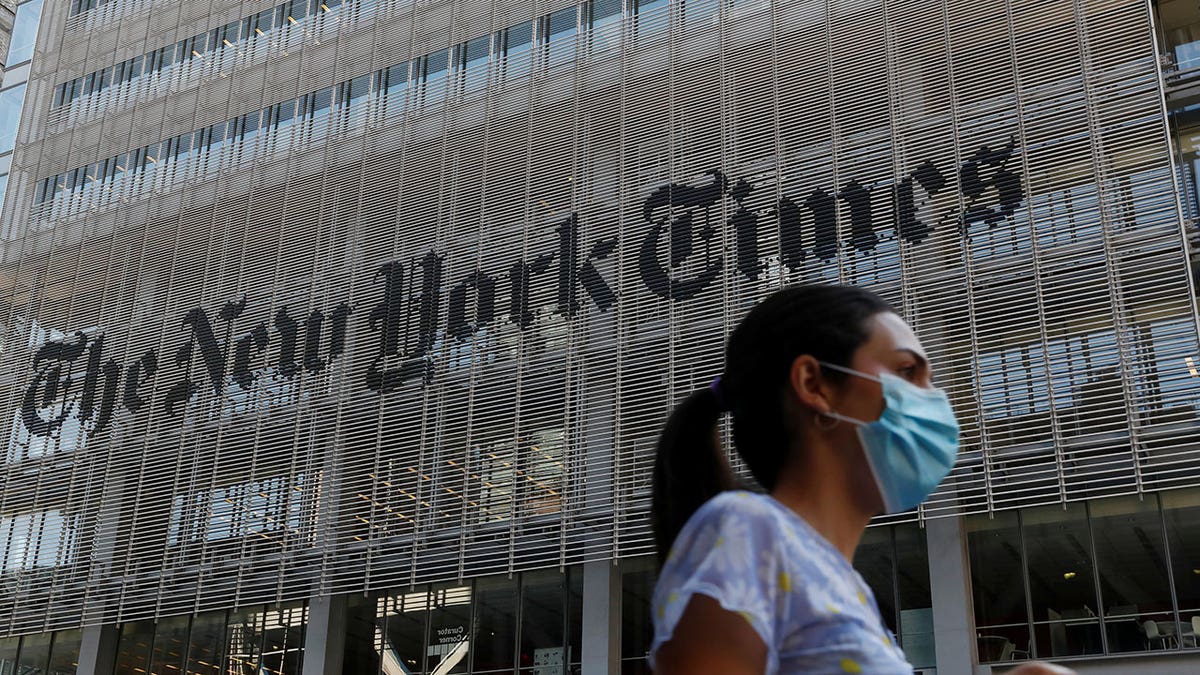US Energy Dept. reportedly supports COVID-19 lab leak theory
White House correspondent Jacqui Heinrich provides updates on the plausibility of the Wuhan lab leak theory on 'Special Report.'
The New York Times was among the many media organizations in 2020 that pushed the narrative that the COVID lab leak theory was some sort of wild conspiracy being pushed by the far right.
As the Times reported earlier this week, "new intelligence has prompted the Energy Department to conclude that an accidental laboratory leak in China most likely caused the coronavirus pandemic." The Times was referring to a bombshell report that the U.S. Energy Department believes the virus likely originated from a lab leak at the Wuhan Institute of Virology – a notion that FBI Director Christopher Wray has since confirmed. But the liberal "paper of record" didn’t always accept the possibility that COVID began in the Wuhan lab.
In 2020, the Times published a report headlined, "Trump officials are said to press spies to link virus and Wuhan labs," that suggested the former president wanted to manufacture a connection.
The report claimed, "administration officials have pushed American spy agencies to hunt for evidence to support an unsubstantiated theory that a government laboratory in Wuhan" was the source of the virus. It also reported that "analysts are concerned that the pressure from administration officials will distort assessments about the virus and that they could be used as a political weapon in an intensifying battle with China."

Critics charge that The New York Times helped create a credibility crisis in the media by misleading Americans into thinking the COVID lab leak theory was a conspiracy theory. (REUTERS/Shannon Stapleton)
This report was read aloud on MSNBC, prompting left-wing anchor Nicolle Wallace to call the lab leak notion "Trump’s favorite conspiracy theory."
Days later, another Times report headlined, "Pompeo ties coronavirus to China lab, despite spy agencies’ uncertainty," cited "senior American officials" downplaying the lab leak theory.
"[A]mong scientists and especially virologists, there is largely agreement that the chances that a lab accident sparked the outbreak are slim, while the probability that the new virus made the leap from an animal to a human in a nonlab setting in southern China is much higher," the Times reported.
The Times’ reporter even compared Trump and Secretary of State Mike Pompeo supporting the lab leak theory to former President George W. Bush claiming Iraq had weapons of mass destruction.
Another Times feature published in July 2020 headlined, "8 questions from a disease detective on the pandemic’s origins," suggested anything against the popular narrative was a "conspiracy" theory.
"Ever since the outbreak erupted late last year in central China, the global rumor mill has buzzed with speculation and conspiracy theories. Experts have ruled out the idea that the pathogen was concocted as a bioweapon. They agree that it began as a bat virus that probably evolved naturally in another mammal to become adept at infecting and killing humans," the Times wrote.
MEDIA SCOLDED, LAMPOONED FOR DISMISSING NOW-LIKELY COVID LAB LEAK THEORY AS MISINFORMATION
In that report, the Times eventually noted that Georgetown University infectious disease specialist Dr. Daniel R. Lucey urged investigators to look for signs of a lab leak – but the key tidbit was buried near the end of a lengthy piece.
In June 2020, the Times published a recap of the Wuhan Institute of Virology’s study that allegedly used "used genetic analysis to trace the likely origin of the novel coronavirus to horseshoe bats." The author was quick to remind readers that the lab was a target of loons.
"That lab has been the target of conspiracy theorists who promote the idea that the novel coronavirus was made in a lab. Scientists and U.S. intelligence agencies agree that the overwhelming likelihood is that the virus evolved in nature," Times science writer James Gorman wrote.
The Gray Lady started to come around in mid-2021, but never corrected previous reporting.
The New York Times did not immediately respond to a request for comment.
In May 2021, Times global health reporter Apoorva Mandavilli was forced to apologize for dismissing the "lab leak" theory as implausible and having "racist roots," even as it was already gaining significant credence in the media at that point.
Times reporter David Leonhardt’s newsletter featured a section that same month, "The Lab-Leak Theory: We have an explainer," which suggested most scientists feel the likely origin was that COVID jumped from an animal to a person, but some embrace the once-dreaded lab leak theory.
"Some scientists who were once skeptical of the laboratory theory have expressed new openness to it,’ Leonhardt wrote. "Among the reasons: Chinese officials have refused to allow an independent investigation into the lab and have failed to explain some inconsistencies in the animal-to-human hypothesis. Most of the first confirmed cases had no evident link to the food market."
ANOTHER US AGENCY ASSESSES COVID-19 ORIGIN LIKELY A CHINESE 'LAB LEAK': REPORT
Leonhardt wrote "some scientists, politicians and journalists have argued that the lab-leak theory deserves consideration," but he failed to mention that anyone who embraced the theory was largely vilified by the left. The Times, did, however admit the theory was rejected by many.
"The World Health Organization initially dismissed the lab-leak theory as implausible," he wrote before offering an explanation.
"It appears to be a classic example of groupthink, exacerbated by partisan polarization," Leonhardt wrote. "Global health officials seemed unwilling to confront Chinese officials, who insist the virus jumped from an animal to a person."
Leonhardt admitted the media’s coverage of Sen. Tom Cotton’s argument in favor of the theory was "flawed."
The Times then called it "plausible" that COVID began in a lab. Also in May 2021, Times opinion columnist Bret Stephens wrote, "If it turns out that the Covid pandemic was caused by a leak from a lab in Wuhan, China, it will rank among the greatest scientific scandals in history."
REPORTERS ADMIT DISMISSING WUHAN LAB LEAK THEORY IN PART BECAUSE REPUBLICANS PROPOSED IT
In 2022, the paper was back to pushing the notion that COVID began in a wet market.
A Feb. 2022 headline, "New Research points to Wuhan Market as pandemic origin," featured a biologist who penned both studies claiming "it’s an extraordinarily clear picture that the pandemic started at the Huanan market."
Outkick’s Bobby Burack mocked the Times over the piece.
"An extraordinarily clear picture, huh? While the studies are compelling — and I encourage everyone to read them — the research does not disprove the lab leak theory, as the Times says," Burack wrote. "So why has the New York Times so quickly declared Saturday’s finding to be true? Well, the Times is motivated to dismiss the Wuhan Institute of Virology’s involvement in COVID-19 to absolve its own role in what could be a worldwide cover-up."
Burack cited a 2021 Spectator report that cited two Times staffers who claimed they were once instructed not to investigate the origins of COVID. The Times vehemently denied the claim at the time, calling it "ridiculous."
Now that the Energy Department and Wray have given the left no other choice but to break from the mainstream narrative, the media's already floundering reliability has taken another blow. Conservative strategist Chris Barron believes the media created the credibility crisis simply because it didn’t like President Trump.
"During the Trump administration the legacy media abandoned any pretext of objective journalism. Every single issue we confronted as a country they looked at as an opportunity to score political points and hurt President Trump," Barron told Fox News Digital. "They prioritized petty partisan politics over protecting the health and welfare of the American people -- a shameful and unforgivable sin."
Fox News’ David Rutz contributed to this report.
Outkick and Fox News share common ownership.




